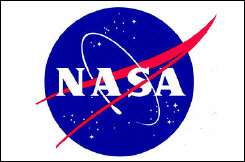Every dollar must go to bridge gaps to Mars, NASA says (Update)

Setting foot on Mars by the 2030s is human destiny and a US priority, and every dollar available must be spent on bridging gaps in knowledge on how to get there, NASA's chief said Monday.
Addressing a conference of space experts at George Washington University, NASA administrator Charles Bolden said that despite hard economic times the United States is committed to breaking new boundaries in space exploration.
"A human mission to Mars is today the ultimate destination in our solar system for humanity, and it is a priority for NASA. Our entire exploration program is aligned to support this goal," Bolden said.
President Barack Obama has proposed a $17.7 billion dollar budget for NASA in 2014, and he supports a "vibrant and coordinated strategy for Mars exploration," Bolden said.
Among the first steps to sending astronauts to Mars are NASA's plans to capture and relocate an asteroid by 2025, a process that should inform future efforts to send humans into deep space, the former astronaut said.
Also, US astronaut Scott Kelly and Russian cosmonaut Mikhail Kornienko have volunteered to spend one year at the International Space Station beginning in 2015 to allow doctors to assess how long-duration zero gravity exposure affects bone density, muscle mass and vision.
Currently, a rotating cast of global astronauts each spend a maximum of six months aboard the orbiting outpost.
But despite a newly diverse space race that involves many more countries than old Cold War foes the United States and Russia, there is plenty that experts do not know about how to reach Mars.
For instance, there is no existing space vehicle to carry people on the seven-month or longer journey there, and no plan for how to return people to Earth.
Medical experts are unsure what the physical ramifications would be for people who attempt to travel in high-radiation environments for such extended periods.
And just how people would survive, breathe, eat and drink on the dry, red planet are significant obstacles that have yet to be overcome.
"The US has demonstrated that we know how to get to the Moon," Bolden said.
"What we have not demonstrated and what I think everyone in this room—well most people in this room will concede, is that there are technological gaps to sending humans to an asteroid and to Mars," he added.
"And so every single moment of our time and every single dollar of our assets must be dedicated to developing those technologies that allow us to go beyond low Earth orbit, beyond the Moon."
The United States is the only nation that has successfully sent robotic explorers to land on Mars, the most recent being Curiosity, a nearly one-tonne vehicle which touched down in August 2012.
Many experts believe that the size of the package needed to maintain a human habitat on Mars would weigh more like 40 tonnes.
"We need a factor of 40 improvement over what we can do today," said Bret Drake, who leads future mission planning and analysis activities for NASA.
There also needs to be a type of fuel potent enough to get the spaceship there quickly. Options for aborting the mission would be sharply limited, he said.
"Once the crew is on their way, they are committed to be self-reliant," said Drake.
Perhaps a precursor to a human landing on Mars would be another rover that would land at an established site, drill down and hopefully find fresh water, said John Grunsfeld, NASA associate administrator for the science mission directorate.
"That would also be the beacon that allows subsequent missions to navigate to a very precise landing," said Grunsfeld.
The three-day conference aims to offer a forum for experts to discuss the latest technologies. It will feature discussions on astronaut health concerns Tuesday and an address by retired celebrity astronaut Buzz Aldrin on Wednesday.
"We can't wait until the technology is available before we go and explore," Bolden said.
"We now stand on the precipice of a second opportunity to press forward to what I think is man's destiny, and that is to go to another planet."
© 2013 AFP


















